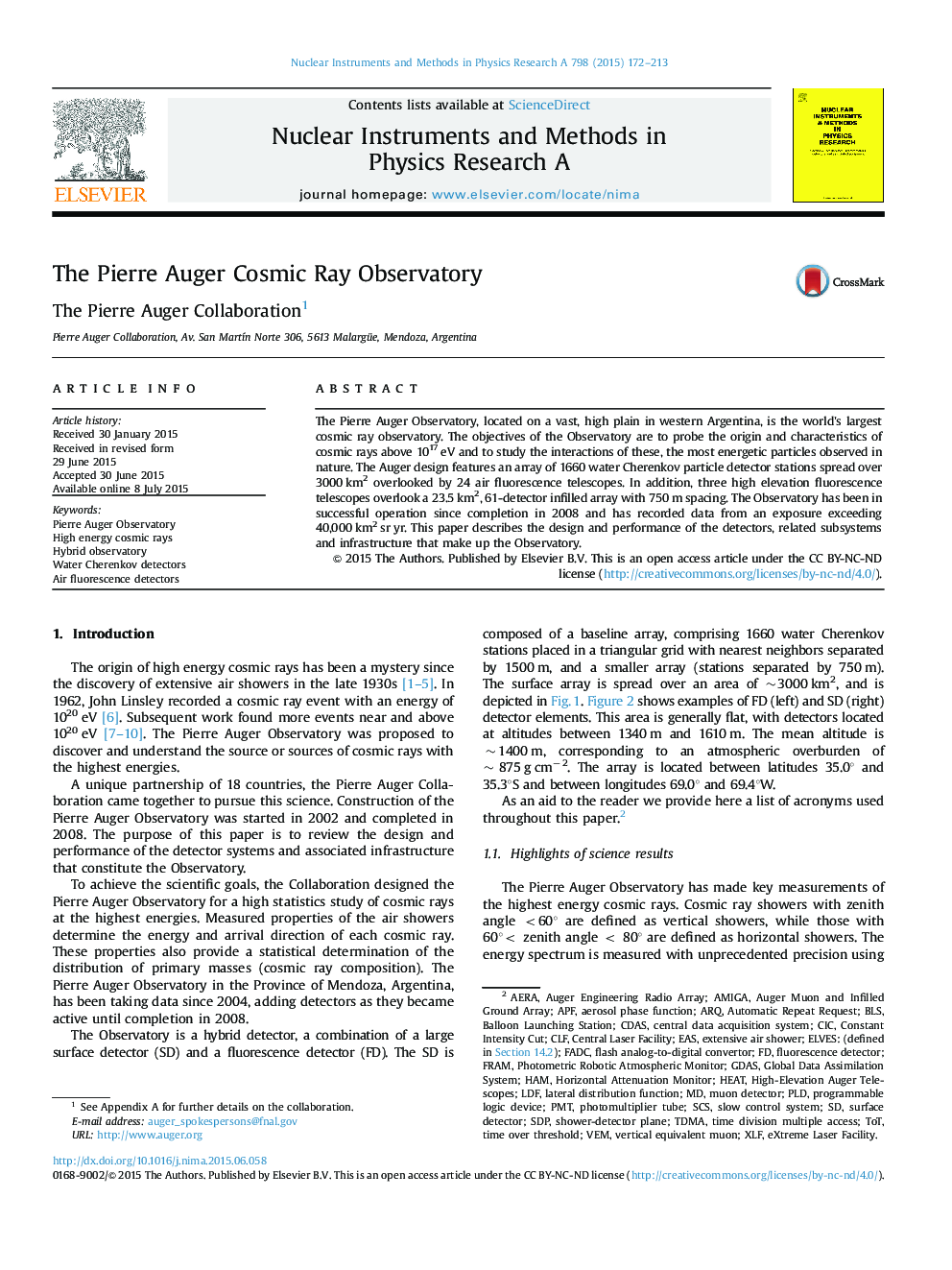| Article ID | Journal | Published Year | Pages | File Type |
|---|---|---|---|---|
| 8171972 | Nuclear Instruments and Methods in Physics Research Section A: Accelerators, Spectrometers, Detectors and Associated Equipment | 2015 | 42 Pages |
Abstract
The Pierre Auger Observatory, located on a vast, high plain in western Argentina, is the world׳s largest cosmic ray observatory. The objectives of the Observatory are to probe the origin and characteristics of cosmic rays above 1017 eV and to study the interactions of these, the most energetic particles observed in nature. The Auger design features an array of 1660 water Cherenkov particle detector stations spread over 3000 km2 overlooked by 24 air fluorescence telescopes. In addition, three high elevation fluorescence telescopes overlook a 23.5 km2, 61-detector infilled array with 750 m spacing. The Observatory has been in successful operation since completion in 2008 and has recorded data from an exposure exceeding 40,000 km2 sr yr. This paper describes the design and performance of the detectors, related subsystems and infrastructure that make up the Observatory.
Related Topics
Physical Sciences and Engineering
Physics and Astronomy
Instrumentation
Authors
The Pierre Auger Collaboration The Pierre Auger Collaboration,
